Getting the attention of powerful industry influencers can be a challenge. People ask big names in any niche to help promote their products every day.
But what if instead of targeting celebrities with a huge social following, you work with hundreds or thousands of micro-influencers to get even better results?
In general, micro-influencers are bloggers or social media users with 100,000 followers or fewer. And here are a few stats that illustrate why brands really need them:
- 71% of consumers are more likely to make a purchase based on a social media reference.
- Only 14% of people can recall the last time they saw an ad and identify the offer it was promoting.
- 90% of consumers trust peer recommendations, while only 33% trust ads.
Think of it this way – Say you run an eCommerce business that sells tennis equipment. Even if you managed to get Serena Williams or Rafael Nadal to endorse your product (good luck with that), most people would take it with a grain of salt. If instead you find a few hundred regular tennis fanatics to mention your brand on social media, their friends and followers will listen.
If you have products listed on Amazon and want to improve your rankings check out this Amazon SEO guide.
I know what you’re thinking: A few hundred micro-influencers? It will take ages to reach out to all of them.
And you’re absolutely right, unless you take advantage of marketing automation.
How to automate your micro-influencer marketing campaign
Luckily, there are plenty of tools out there that can put some (or most) of your micro-influencer marketing campaign on autopilot. But before you start using them, you need to answer 3 questions:
- What do you want to achieve with influencer marketing?
- Where does your target audience hang out?
- What kind of influencers will they listen to?
What do you want to achieve with influencer marketing?
If you want your micro-influencer marketing strategy to succeed, your goals need to be more specific than just improving your bottom line.
Social media influencers can help drive all sorts of goals that ultimately improve your brand reach and grow your business, such as:
- Build brand awareness
- Drive sales
- Generate new leads
- Grow your social following
- Get reviews
- Increase site traffic
- Encourage in-store visits
- And more.
Which marketing goals you choose will determine what kind of content your micro-influencers will share. This influencer marketer post is a good example of encouraging in-store visits:
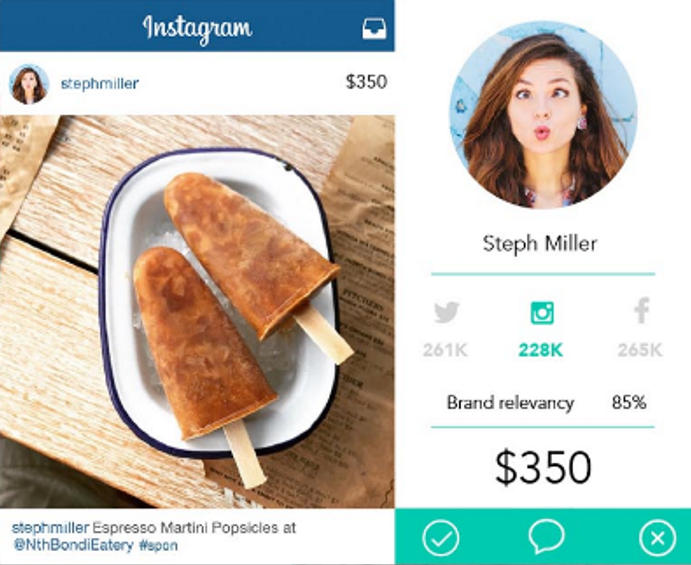
Where does your target audience hang out?
Next you’ll need to figure out which social platforms are most relevant to your target audience. Instagram, Twitter and YouTube are all popular platforms to find micro-influencers, but where is your target audience actually listening?
If you already have buyer personas as part of your marketing strategy, you can refer back to them to figure this out. Compare your buyer personas to the demographic data of different social media sites, such as gender, age, location, income, education, etc.
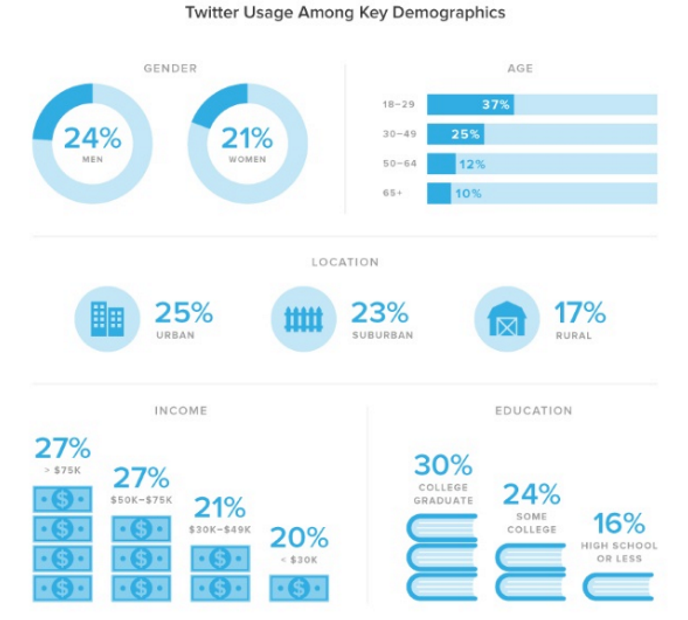
Which platforms best represent your target audience?
You can also refer to your current social media marketing efforts to get an idea. On which platform do you get the most followers and engagement already?
Once you know which platforms you want to market to, you can start finding influencers.
What kind of influencers will they listen to?
The last step before you start automating is finding your perfect influencer. You already know what platform they should be on, but what other characteristics should they have?
Consider:
- Male, female, or either?
- How many followers?
- What skills and interests should they have that relate to your product?
Those are the minimum questions you should answer before searching for micro-influencers. Some search tools allow you to get even more nuanced, with filters based on age, location and other factors. But we’ll discuss that below.
Tools for Micro-Influencer Marketing Automation
Now you know what you hope to achieve with micro-influencer marketing, and have a good idea of what kind of influencers can help you do it. Next comes the processes you can automate:
- Finding influencers: Instead of scouring social media to find your perfect influencers one by one, use an online tool or searchable database to do it for you.
- Creating content: You could create content yourself or hire influencer marketing experts to do it for you. Better yet, use an influencer marketing platform that prompts your influencers to create content for you.
- Compensation: Use an influencer marketing tool to set your campaign budget and automate payments to your influencers.
- Measurement: Automatically track your influencers’ posts to get insights about engagement whenever you need.
You can automate some or all of these processes depending on which tools or services you use. In the rest of the post, we’ll discuss 3 types of tools that help:
- Influencer discovery and outreach tools.
- Influencer marketplaces to find, contact, and work with influencers on different social media sites.
- All-in-one tools to automate every stage of your influencer marketing campaign.
Influencer Discovery and Outreach
Klear
Klear is an influencer search engine with 500 million profiles spanning 60,000 categories. You can use it to search for Twitter, Instagram, YouTube and blogging influencers specializing in all sorts of niches.
Klear gives you an in-depth look at each influencer’s social presence, including their engagement:
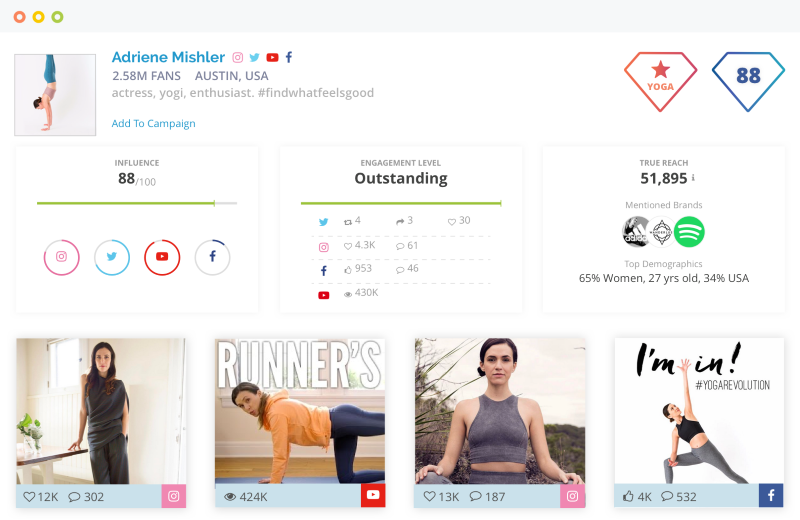
You can easily catalogue and contact influencers right on the platform.
NeoReach
NeoReach is a self-service influencer marketing platform. It indexes the social web into a searchable database of social media and blogging influencers. The platform also helps you manage outreach, and track the results of your campaigns.
Huge brands have used NeoReach to find influencers to help promote their products, like Walmart and their Gold Disk Giveaway:
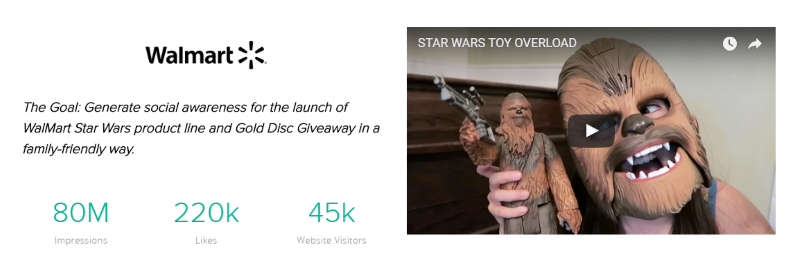
HYPR
HYPR calls itself the world’s largest influencer marketplace, and with more than 10 million influencers listed, it just might be. It helps you find influencers based on their audience demographics, like age, location and interests.
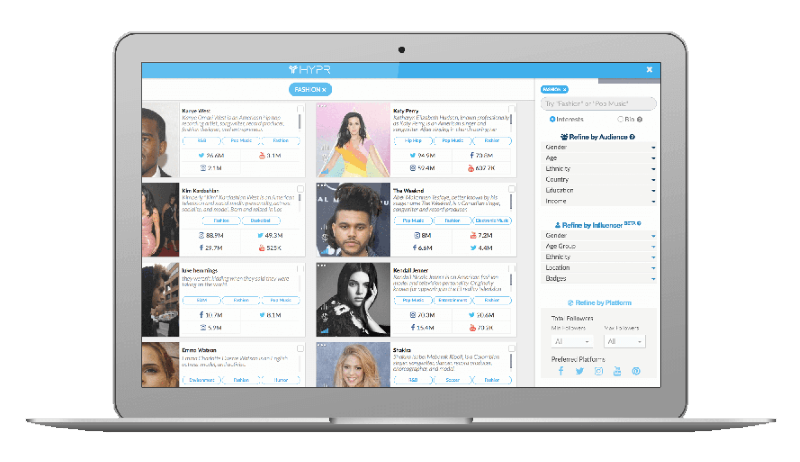
Traackr
Traackr is an influencer relationship management platform. With it, you can upload your database of existing influencers and use their information to expand your network and find others.
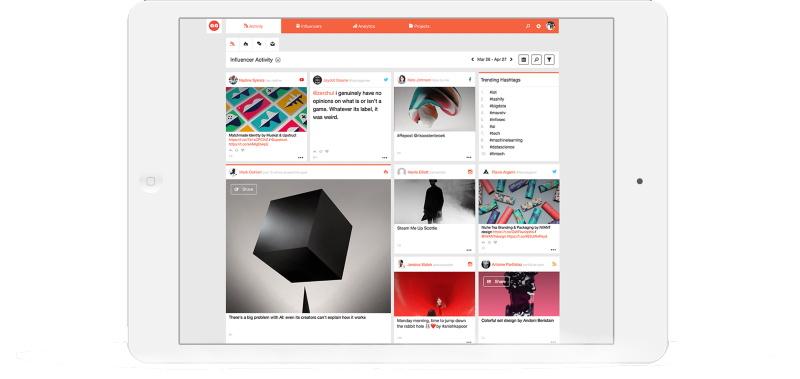
Traackr can also help you impress your potential influencers by making it easy to monitor influencer activity and discover the right time to connect and start building a relationship.
Traackr also helps you manage your engagement with influencers and measure the results of your efforts for brand reach and other factors.
Revfluence
Revfluence is a sophisticated database of over 500,000 influencers that uses machine learning to help you find the right people to help with your marketing campaign.
You can browse influencers by industry, location, audience demographics and lots of other factors, or just use a keyword search. Instead of sending out hundreds of cold emails, Revfluence makes it easy to contact influencers with a single click.
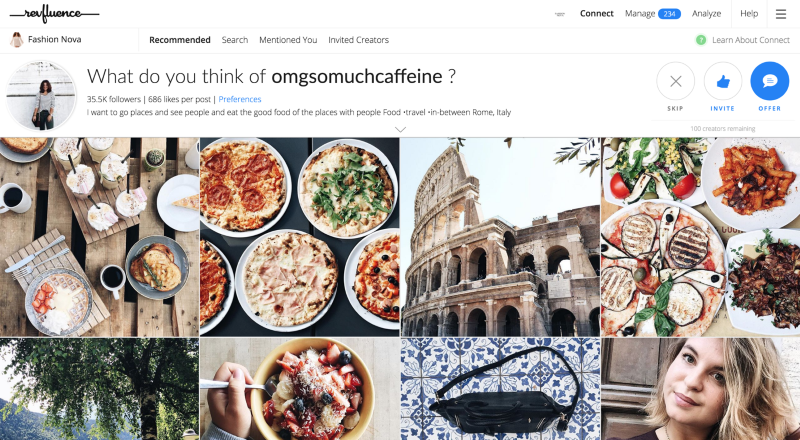
The platform also helps keep track of sales, site traffic, follower attribution, and other key performance indicators you can use to measure ROI.
Influencer Marketplaces
Shoutcart
Shoutcart is an influencer marketing tool for Instagram and Twitter. All you have to do is browse their database of influencers and select ones that work best with your niche. You can browse by category, number of followers, price, and other factors, or use the search feature:
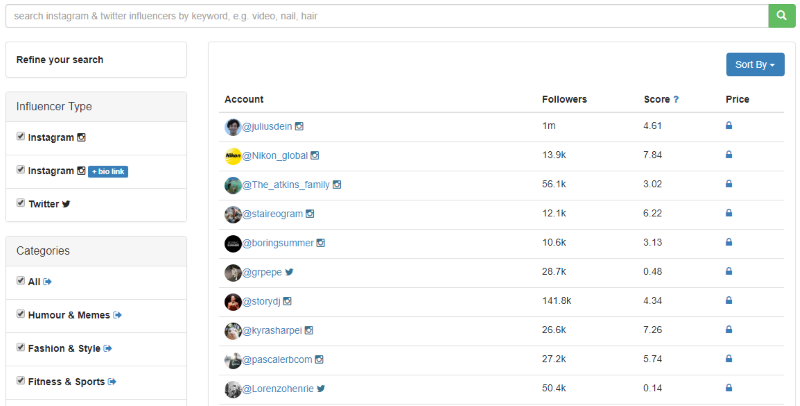
Then you upload an image or video to the site for these influencers to share. Select what time you’d like your influencers to share, pay for the order, and you’re done! Your influencer will share the post with their audience.
Tribegroup
Tribegroup works a bit differently than Shoutcart – you don’t provide the content for influencers to share, they create it for you.
First, you upload a brief of your product to the platform, then select influencers from Tribegroup’s extensive database.
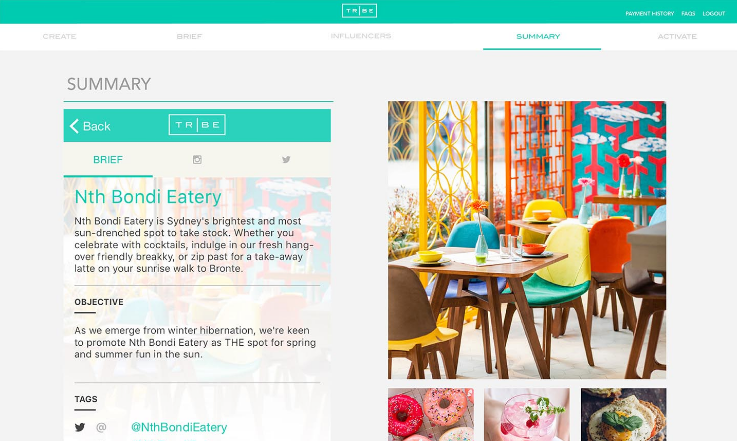
These selected influencers can then create a unique post about the product and submit it to you for approval. If you like it, they’ll share it and you’ll pay them.
The real benefit of this platform is that the content influencers share is more genuine. They add their own touch to the post instead of blindly sharing whatever brands throw their way.
Famebit
Famebit is another popular platform where you can find micro-influencers for YouTube and Instagram. If you’re looking to market on YouTube, Famebit connects you with creative people who will make unique videos about your product and share them on their profiles.
This YouTube video for Office Depot is an example of the platform’s work:
Like Tribegroup, you submit a brief about your product for content creators to work with. They’ll then submit content proposals to you that you can reject or approve. Once approved, they create the content and share it with their social followers.
All-in-One Tools
IZEA
IZEA is an all-in-one influencer marketing tool that can help you with many different areas of the process. If you have the budget to completely automate your micro-influencer marketing strategy, then you can hire their in-house team to create content, find influencers, optimize your campaign, and more.
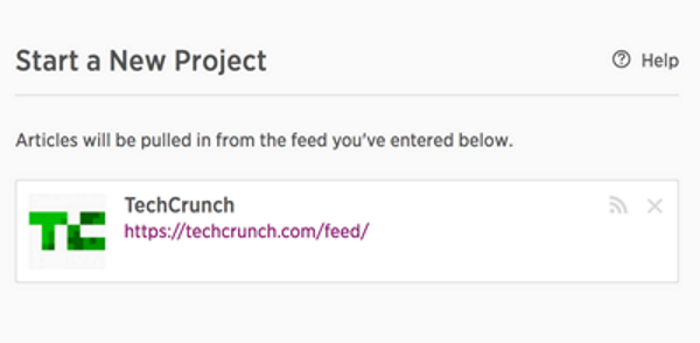
If you’re on a budget, you can opt for their self-service content amplification tool. It’s also automation-friendly because you can add links to your content or your entire RSS feed to the system to create new influencer marketing opportunities every time you publish new content.
Then you just pick your influencers, set your budget, and let the program run itself.
Linqia
Linqia is another great tool for micro-influencer automation. It uses a combination of artificial intelligence and audience targeting to find the best influencers for you. It also offers goal-based pricing that automatically adjusts how much you spend based on what goals you want to achieve (Reach, engagement, traffic, etc.).
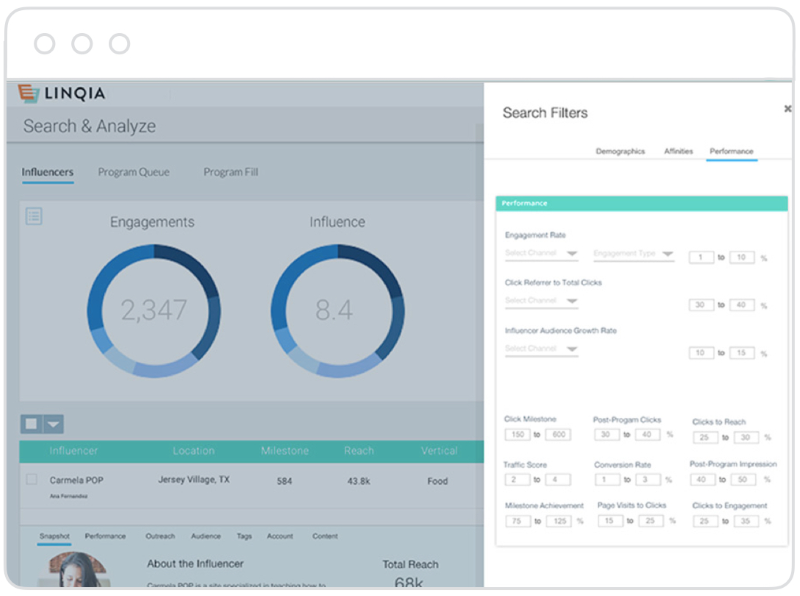
They also have a team of experts on hand who can optimize your campaigns for you, and make sure your brand is appears consistently across social media.
Wrapping Up
Now you know quite a few different tools that can help you automate your micro-influencer marketing strategy. Let’s quickly recap which platforms can help you with your various automation needs:
| Finding and contacting influencers | IZEA, Linqia, Tribe, Famebit, Shoutcart, Revfluencer, Traackr, Neoreach, HYPR, Klear |
|---|---|
| Creating Content | IZEA, Linqia, Tribe, Famebit |
| Compensation | IZEA, Linqia, Famebit, Shoutcart |
| Creating Content | IZEA, Linqia, Revfluence, Traackr, Neoreach |
You can automate as little or as much of your micro-influencer marketing campaign as you want, based on your budget and time investment needs. All these tools are at your fingertips to make it happen.
Influencer marketing is a nascent space in digital marketing. New tools are released all the time, while the others are constantly improving and expanding their features. As time goes on, there will definitely be new ways to save time and optimize your strategy using automation.
Note: The opinions expressed in this article are the views of the author, and not necessarily the views of Caphyon, its staff, or its partners.
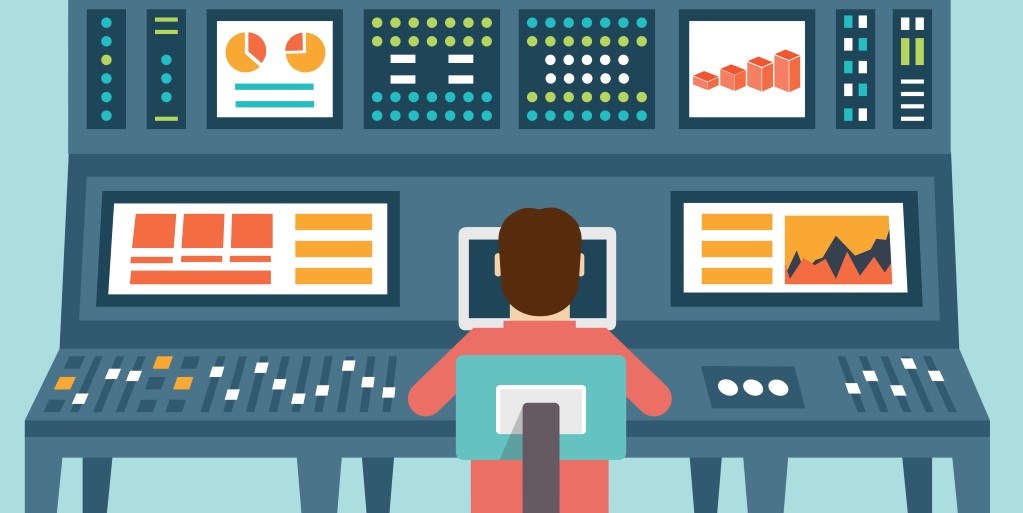



3 comments
Wow! I just read something interesting! Great guide!
Great list! I also recommend Phlanx.com influencer platform where you can make marketing partnerships through their influencers directory and collaborations portal.
Good read! But I think it’s also important to audit your these influencers before striking a collaboration deal with them as there are now too many fake influencers. Using analytics and auditors can definitely give more information about the account – Influencer Auditor for example or something similar.
Comments are closed.